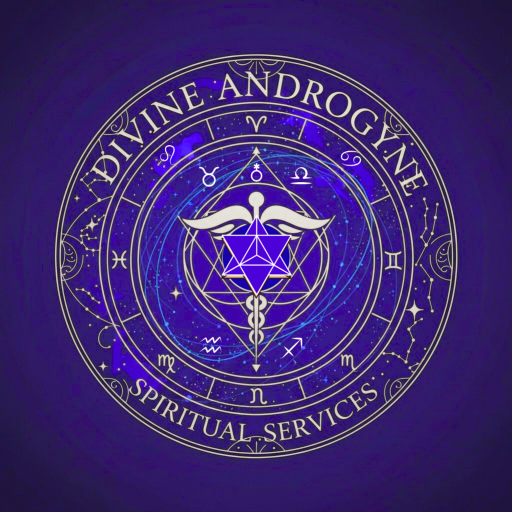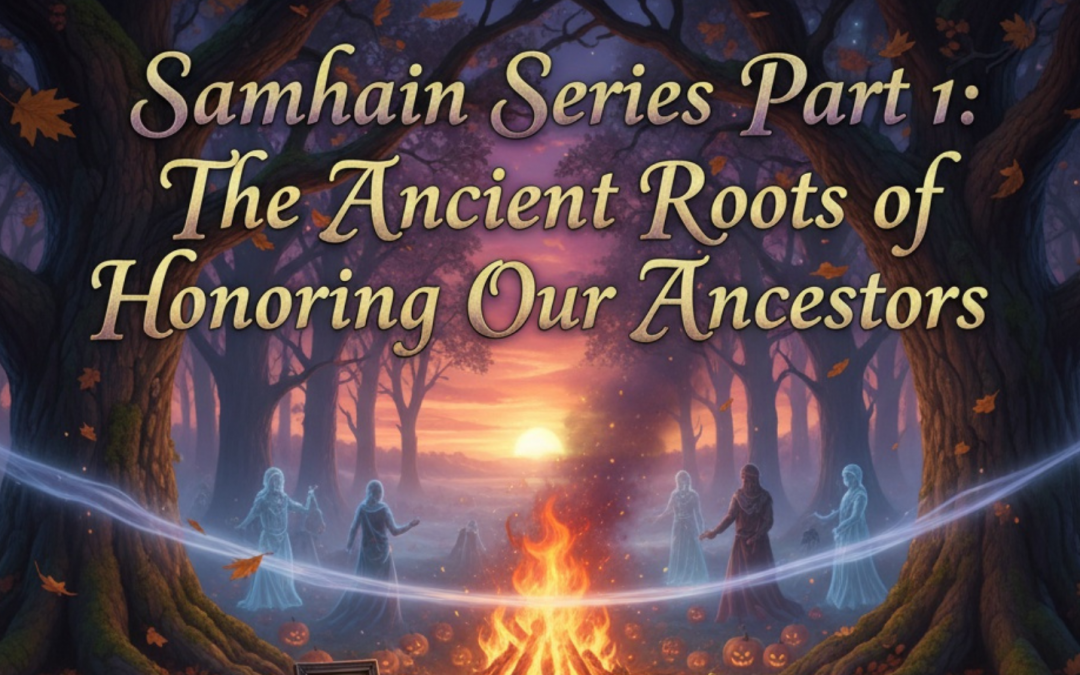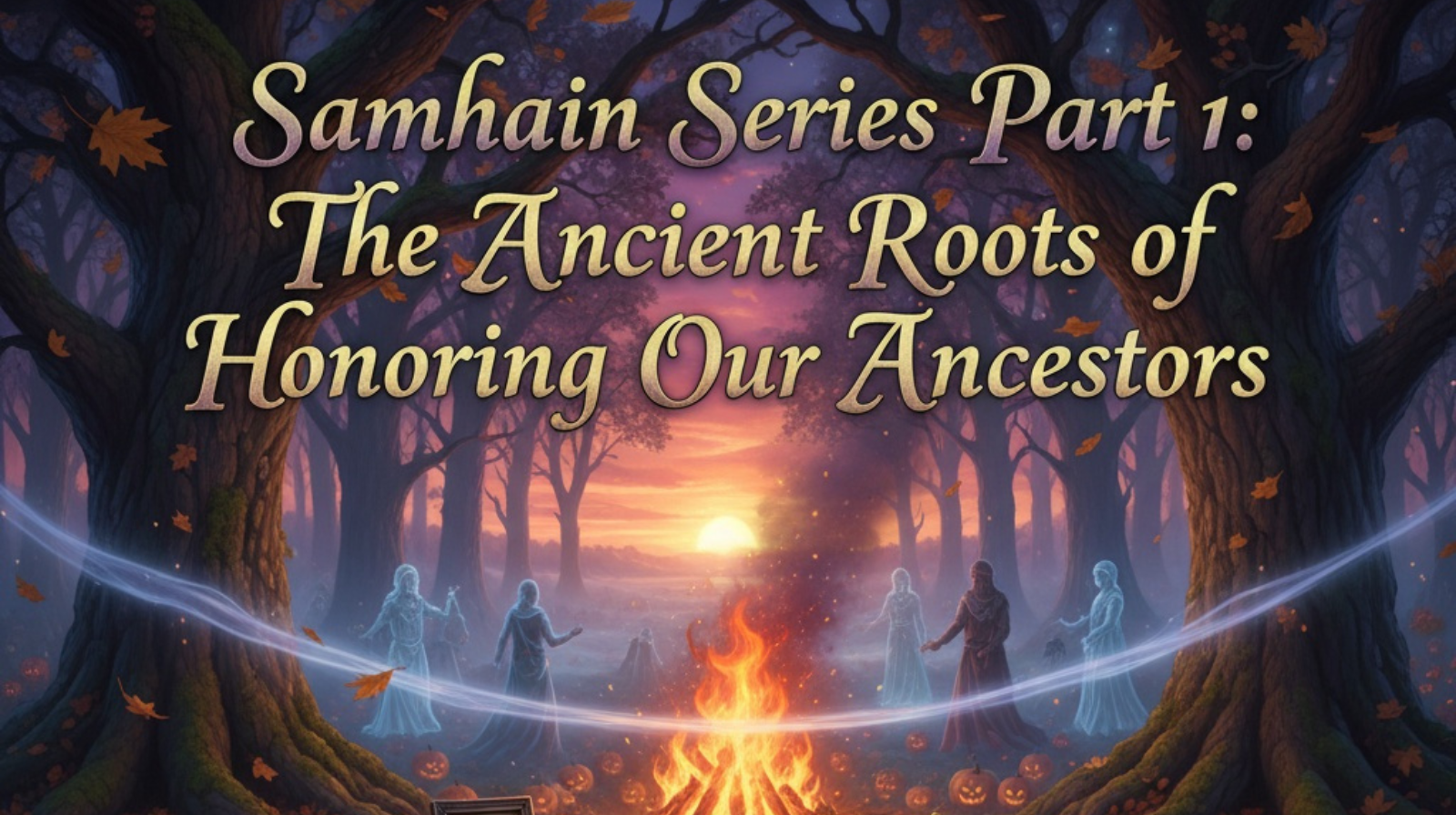Samhain Series Part 1: The Ancient Roots of Honoring Our Ancestors
As October unfolds and the veil between worlds grows thin, we approach one of the most sacred times of the year: Samhain (pronounced “SOW-in”). While modern culture celebrates Halloween with costumes and candy, the ancient spiritual roots of this season run deep—connecting us to our ancestors, the cycles of nature, and the mysteries of life and death.
Welcome to the first installment of our three-part Samhain series! This month, we’ll explore the history of this powerful holiday, learn how to build an ancestor altar, and discover meaningful ways to honor those who came before us. Let’s begin by understanding where these traditions come from and why they still matter today.
Samhain is an ancient Celtic festival that marks the end of the harvest season and the beginning of winter—the “darker half” of the year. Celebrated from sunset on October 31st through November 1st, Samhain was considered a liminal time when the boundary between the physical world and the spirit world became permeable.
The Celts believed that during Samhain, the spirits of the dead could more easily cross over and visit the living. Rather than fearing this, they embraced it as an opportunity to honor their ancestors, seek guidance from the spirit world, and celebrate the eternal cycle of life, death, and rebirth.
Samhain was one of four major Gaelic seasonal festivals, along with Imbolc, Beltane, and Lughnasadh. It represented not just a change in weather, but a profound spiritual transition—a time to reflect on mortality, gratitude, and our connection to those who walked before us.
The concept of the “veil” is central to understanding Samhain. In spiritual traditions, the veil represents the energetic barrier between our physical reality and the realm of spirit. Throughout most of the year, this veil remains relatively thick, making communication with the other side more challenging.
But at Samhain, as nature itself transitions from abundance to dormancy, the veil grows thin. This makes it an ideal time for:
For those of us who work with spirit—whether through mediumship, tarot, astrology, or other practices—Samhain offers a particularly powerful window for connection and healing.
The Celts and other ancient cultures had beautiful, intentional practices for honoring the dead during Samhain. These weren’t spooky or morbid rituals—they were acts of love, remembrance, and community.
One of the most profound traditions was the “dumb supper,” a meal eaten in silence to honor the dead. Families would set an extra place at the table for departed loved ones, serving their favorite foods and drinks. The silence allowed space for the spirits to be present and for the living to feel their connection.
Communities would gather around massive bonfires, which served multiple purposes: they provided warmth as winter approached, symbolized the sun’s life-giving power, and were believed to offer protection and guidance to wandering spirits. People would extinguish their home fires and relight them from the communal bonfire, symbolizing unity and renewal.
Families created altars with photos, mementos, and offerings for their ancestors. They would leave out food, drink, and items their loved ones enjoyed in life. This wasn’t just symbolic—it was believed that spirits could absorb the essence or energy of these offerings.
Samhain was considered the most powerful time for divination. People would use various methods—scrying in water or mirrors, reading omens in nature, casting lots—to gain insight into the coming year and receive messages from the other side.
Yes, the ancient Celts did wear costumes—but not for the reasons we might think! They would dress in animal skins and masks, partly to disguise themselves from any harmful spirits that might cross over, and partly to honor the animals and the natural world as winter approached. This practice evolved over centuries into our modern Halloween costumes.
So how did we get from sacred ancestor rituals to trick-or-treating? The transformation happened gradually over centuries.
When Christianity spread through Celtic lands, the Church sought to replace pagan festivals with Christian holidays. In the 8th century, Pope Gregory III designated November 1st as All Saints’ Day (also called All Hallows’ Day), and the night before became All Hallows’ Eve—eventually shortened to Halloween.
November 2nd became All Souls’ Day, a time to pray for the dead. Interestingly, many Samhain traditions were absorbed into these Christian observances, including lighting candles for the deceased and visiting graves.
The practice of going door-to-door has medieval roots. “Souling” involved the poor going to wealthy homes and offering prayers for the dead in exchange for “soul cakes” (small pastries). “Guising” involved people dressing in costume and performing songs, poems, or tricks in exchange for food or coins.
When Irish and Scottish immigrants brought these traditions to America in the 19th century, they evolved into our modern trick-or-treating.
By the early 20th century, Halloween had become increasingly commercialized in America, focusing more on parties, costumes, and candy than spiritual connection. While this created fun community traditions, it also distanced many people from the deeper meaning of the season.
Today, many people are rediscovering the spiritual significance of Samhain. We’re learning that honoring our ancestors isn’t morbid or scary—it’s healing, grounding, and deeply meaningful.
Whether you follow a specific spiritual path or simply want to connect more intentionally with those you’ve lost, Samhain offers a beautiful opportunity to:
You don’t need to be a practicing witch or pagan to honor these traditions. Ancestor veneration exists in cultures worldwide—from Día de los Muertos in Mexico to Obon in Japan to the Hungry Ghost Festival in China. The desire to remember and connect with our dead is universal and deeply human.
In our modern culture, we often avoid talking about death. We’re uncomfortable with grief, unsure how to honor those we’ve lost, and disconnected from the natural cycles that our ancestors understood intimately.
Samhain invites us to change that. It reminds us that death is not an ending but a transition, that our loved ones remain connected to us in spirit, and that honoring them can bring profound healing.
When we create space to remember our ancestors—to speak their names, share their stories, and feel their presence—we heal not just our own grief, but generational wounds. We acknowledge that we are part of a long lineage, that we carry their wisdom and strength, and that one day, we too will be remembered.
Now that you understand the history and significance of Samhain, you’re ready for the practical work! In Part 2 of this series, we’ll dive deep into how to create a beautiful, meaningful ancestor altar in your home. I’ll walk you through everything you need—from choosing a location to selecting offerings to setting sacred intention.
And in Part 3, we’ll explore specific practices for honoring your ancestors during Samhain, including how to hold an ancestor supper, make offerings, and use these rituals for grief healing and spiritual connection.
This October, let’s reclaim the sacred heart of this season together. Let’s honor those who came before us, heal our grief, and strengthen our connection to the spirit world.
If you’re feeling called to deepen your connection with your ancestors and the spirit world this Samhain, I’d love to support you. Here are some ways we can work together:
Cosmic Wisdom Hour & Messages: Join me every Tuesday at 7pm MT on Discord, Facebook, and YouTube for live spiritual guidance, messages from spirit, and community connection.
Death Astrology Reading: My signature service combines 30+ years of mediumship with astrology to help you understand your loved one’s soul contract, their emotional state at passing, and find healing in your grief. This reading offers 90-95% accuracy and profound insight.
Mediumship Readings: Connect directly with your loved ones in spirit. Receive messages, find closure, and experience the healing that comes from knowing they’re still with you.
Samhain Ceremony: Watch for announcements about special Samhain events and ceremonies this October!
Visit https://PsychicInsights.as.me/HollisTaylor to book a reading or learn more about my services. And be sure to come back next week for Part 2 of our Samhain series!
Until then, may you feel the presence of your ancestors and know that you are never alone.


